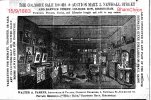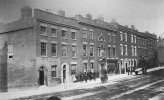-
Welcome to this forum . We are a worldwide group with a common interest in Birmingham and its history. While here, please follow a few simple rules. We ask that you respect other members, thank those who have helped you and please keep your contributions on-topic with the thread.
We do hope you enjoy your visit. BHF Admin Team
You are using an out of date browser. It may not display this or other websites correctly.
You should upgrade or use an alternative browser.
You should upgrade or use an alternative browser.
Newhall Street
- Thread starter Dave M
- Start date
S
Stitcher
Guest
Pedrocut
Master Barmmie
Assuming that the lowest point of Newhall Street is at the crossroads with Charlotte Street, which way are we looking?
Pedrocut
Master Barmmie
Yes I think that’s right. Looking again there are two two dips in Newhall Street. This one looking down to Cornwall Street.
https://earth.app.goo.gl/epQ9
https://earth.app.goo.gl/epQ9
A Sparks
master brummie
Interesting!This was the Colmore Sale Rooms and Auction Mart at #3 Newhall Street, Viv
View attachment 176069Source: British Newspaper Archive
I see the owner lived in Birchfield, the Victorian houses in that road are still there.
Thanks ASparks I’ve just had a look. Most of the road seems to be terraced villas with name plaques still on the buildings. I suspect Holly Bank would have been where Salisbury Road joined Birchfield Road. I think at some point Birchfield Road was widened and consequently several houses were probably removed in Salisbury Road. Perhaps it was one of those. With a name like Holly Bank it sounds to me like a detached house too. All guesswork though. Viv.
This photo was on a site trying to identify unknown photos. It was identified as 35-37 Newhall St, architects Newton and Cheatle, and constructed with materials from Gibbs and Canning terracotta manufacturers . It was destroyed by bombing during the war I am not certain whether it also includes at least another building next to 35-37, but this is arguable and not clear. 1950s map below after bombing
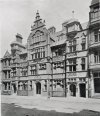
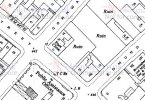


BrummieGeoff
Sparkhill Lad
Lennox Stevenson
New Member
Afternoon everyone! I am a second year History student at the University of Birmingham. I have chosen to study the history of Newhall Street as part of my module on 'Public History'. My assignment for this module has asked me to "discuss and justify what is the best format/formats to present a public history exhibition", considering "creative expressions" such as murals, monuments etc.
Would those on this forum be willing to share what they believe the best method of communicating a project about Newhall Street's history (encompassing its industrial past, links to the Chartist uprising of 1839 etc) would be?
Feel free to ask me any questions if this does not make sense. Thank you all
Would those on this forum be willing to share what they believe the best method of communicating a project about Newhall Street's history (encompassing its industrial past, links to the Chartist uprising of 1839 etc) would be?
Feel free to ask me any questions if this does not make sense. Thank you all
Hi and welcome to Birmingham History Forum. It really boils down to how you and your course supervisor are defining Public History. I see it in a couple of ways.Afternoon everyone! I am a second year History student at the University of Birmingham. I have chosen to study the history of Newhall Street as part of my module on 'Public History'. My assignment for this module has asked me to "discuss and justify what is the best format/formats to present a public history exhibition", considering "creative expressions" such as murals, monuments etc.
Would those on this forum be willing to share what they believe the best method of communicating a project about Newhall Street's history (encompassing its industrial past, links to the Chartist uprising of 1839 etc) would be?
Feel free to ask me any questions if this does not make sense. Thank you all
Firstly, it is a term that describes a broad range of disciplines undertaken by people who have an understanding of history but wish to work outside of the restraints of academic history. In general, those of us who embrace the term public historian accept that the boundaries of the field are somewhat fluid and that its definition remains a work still evolving.
Secondly, All the means deliberate and otherwise, through which those who are not professional historians acquire their sense of the past.
If you then think about some basic principals of public history, you are looking at objects, oral history, family stories, images, and landscape.
So, I say you have come to the right place with this forum.
Use the search box and look up Newhall Street and you will find plenty of images and stories and memories. A lot of Birmingham people are very nostalgic about the old museum of science and industry and formed quite a strong place attachment to it.
I will certainly say that the old museum did a far better job of engaging everyday people with the past and it was a super way of approaching the past from outside of the normal academic routes, the routes of well-thumbed and well quoted preciously guarded documents, accessible only to a privileged few, or the scholarly writing academics than Think Thank have ever done.
Good luck with your course and let us know how it going, we are always happy to help.
Mark Tooze
master brummie
HI Lennox - I have posted quite a few of my own photos of the Science Museum on the forum - please feel free to use any you want to in your project. Best regards - MarkAfternoon everyone! I am a second year History student at the University of Birmingham. I have chosen to study the history of Newhall Street as part of my module on 'Public History'. My assignment for this module has asked me to "discuss and justify what is the best format/formats to present a public history exhibition", considering "creative expressions" such as murals, monuments etc.
Would those on this forum be willing to share what they believe the best method of communicating a project about Newhall Street's history (encompassing its industrial past, links to the Chartist uprising of 1839 etc) would be?
Feel free to ask me any questions if this does not make sense. Thank you all
Mark Tooze
master brummie
I've also found a few photos from the 70's / 80's of buildings on Newhall St which I had not previously posted (I think!):-
Firstly the old Telephone Exchange on the corner of Newhall St and Edmund St:-
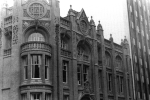
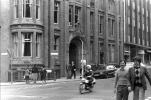
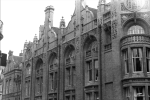
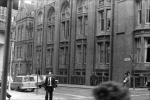
Next the emblem on top of the Assay Office:-
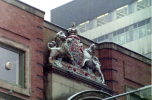
And finally the Queens Arms on the corner of Newhall St and Charlotte St:-
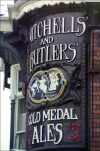
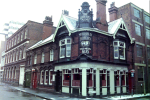
Firstly the old Telephone Exchange on the corner of Newhall St and Edmund St:-




Next the emblem on top of the Assay Office:-

And finally the Queens Arms on the corner of Newhall St and Charlotte St:-






